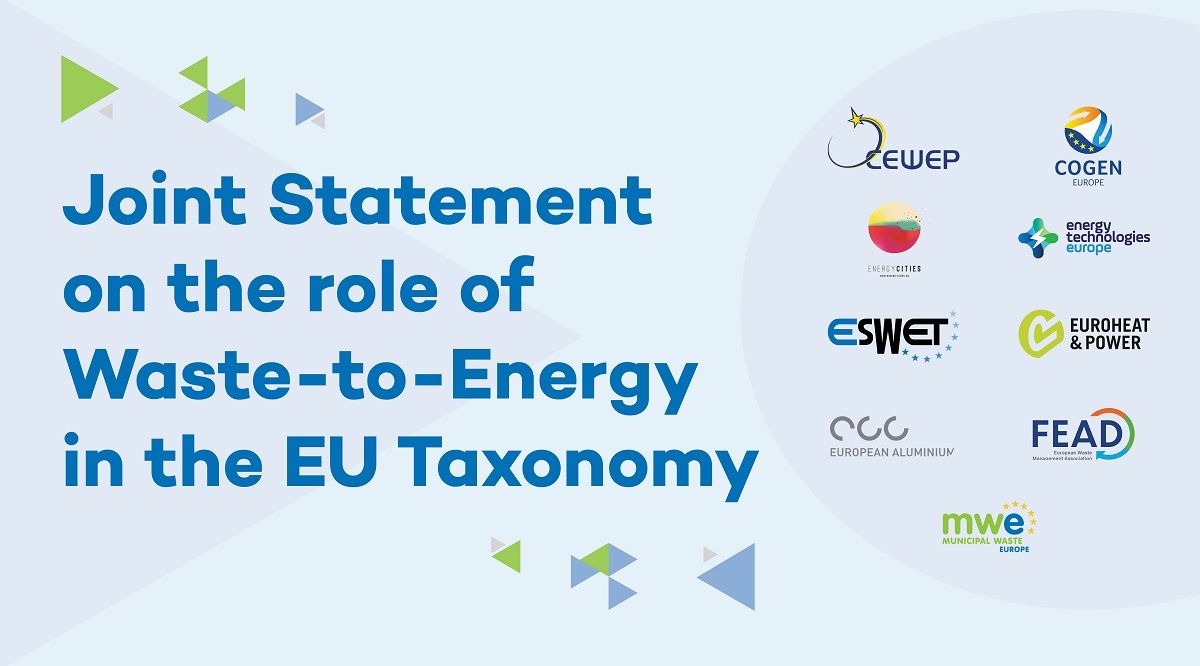The statement underlines the contribution of Waste-to-Energy towards a sustainable Europe, thanks to its role in energy and material self-sufficiency, its complementarity with recycling and renewable energy, but also with other industries.
The statement has been co-signed by nine associations representing several important sectors at the EU level: CEWEP, Cogen Europe, Energy-Cities, ESWET, Energy Technologies Europe, Euroheat & Power, European Aluminium, FEAD and Municipal Waste Europe.
The signatories welcome the launch of the Platform on Sustainable Finance as Europe aims to achieve climate-neutrality by 2050. In this regard, the “EU Taxonomy” is a significant step to guide the green transition. While respecting the EU waste hierarchy, the signatories of the statement believe is important for the Platform to consider more in-depth sectors dealing with waste management, heat and energy efficiency. They bring significant contributions to all of the environmental objectives listed in the taxonomy.
Waste-to-Energy plants link key sectors of the economy – waste management, heating and electricity sectors and others – and are key enablers of systems integration making the bridge between building a more circular economy, an energy union and achieving climate change goals.
As already acknowledged by the Commission, the statement underlines that Waste-to-Energy has a role to play in the circular economy:
- As a complementary tool to recycling, it safely treats residual waste.
- It diverts residual waste from landfills, which prevents methane emissions.
- It ensures the implementation of the EU landfilling target, with a minimised environmental impact.
- It turns waste into energy for the community and industries.
- It recovers valuable secondary raw materials, which completes proper separate collection and sorting in the prevention of further virgin material extraction.











